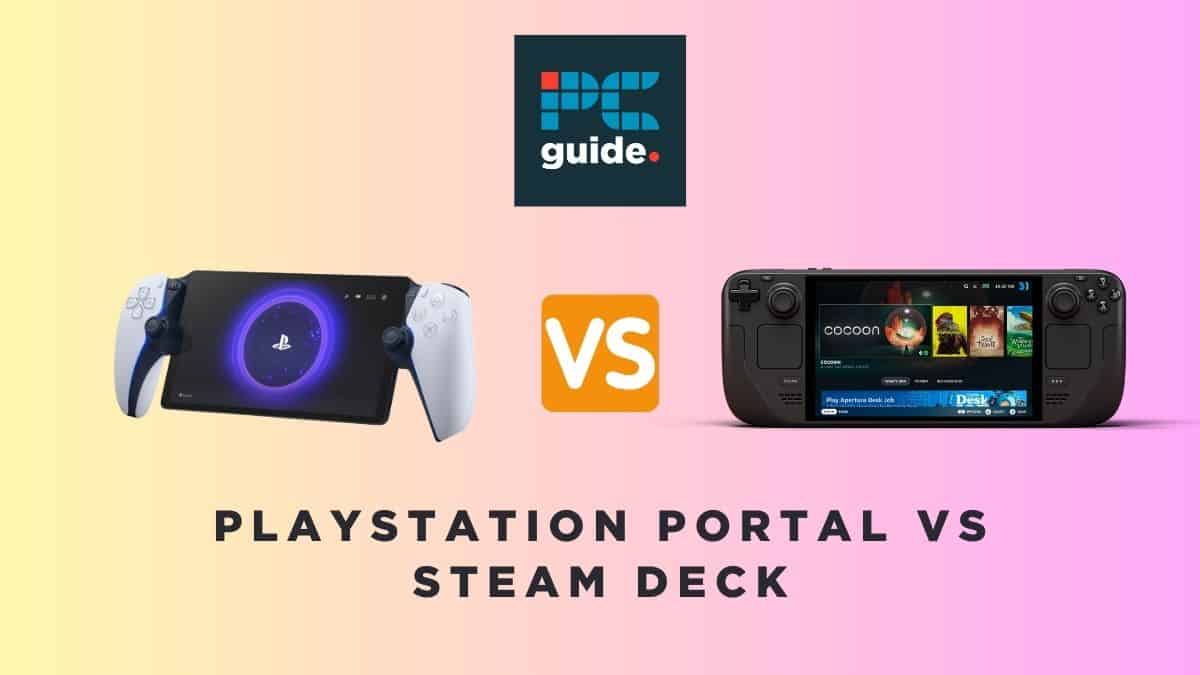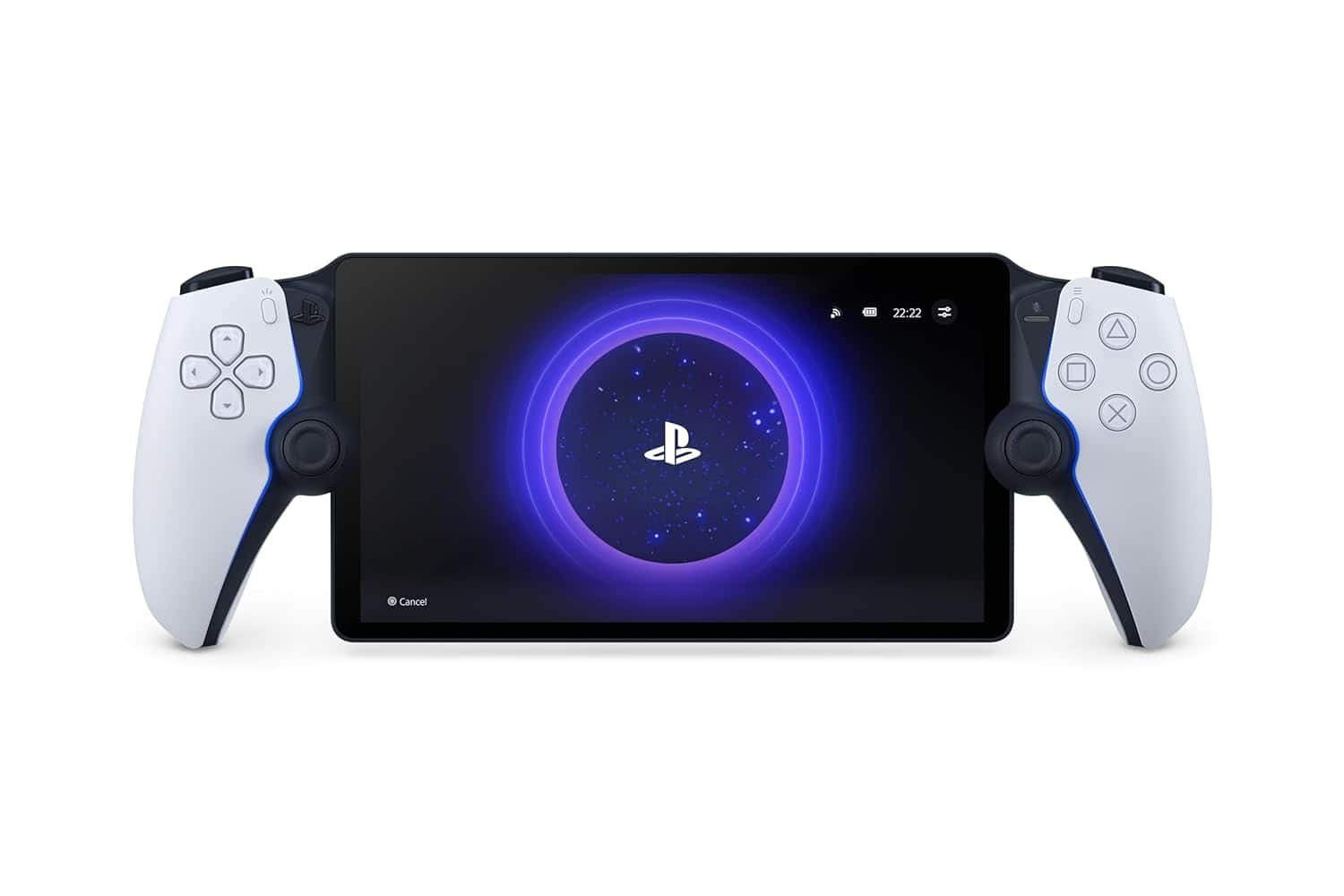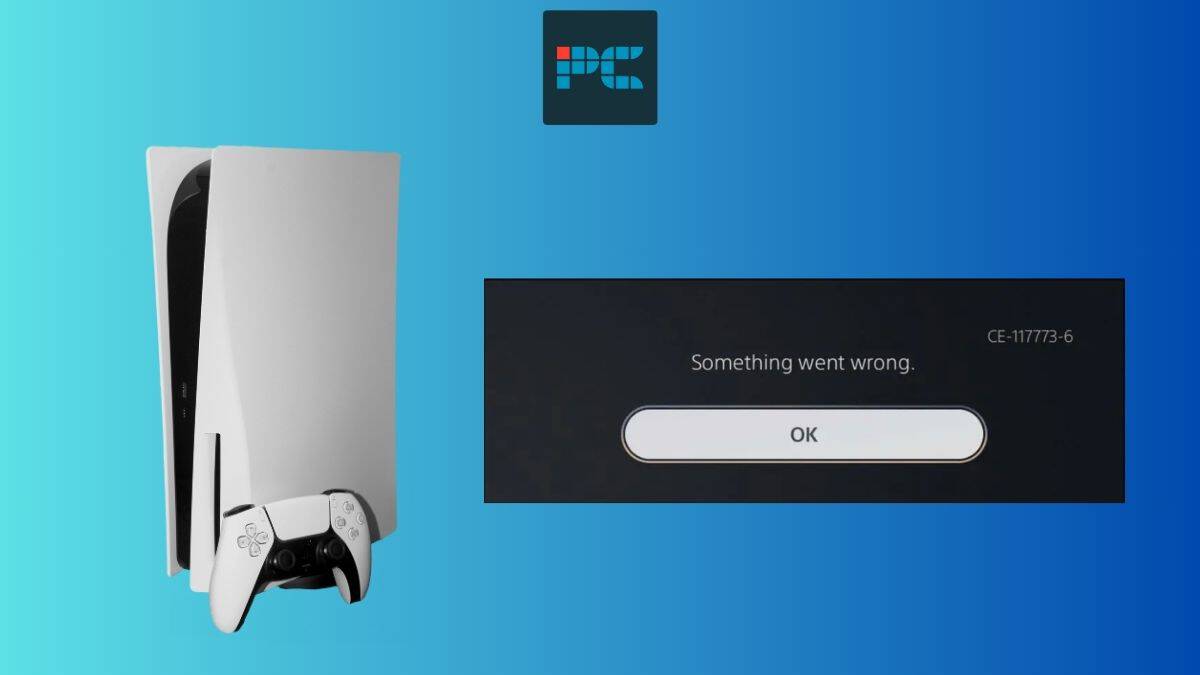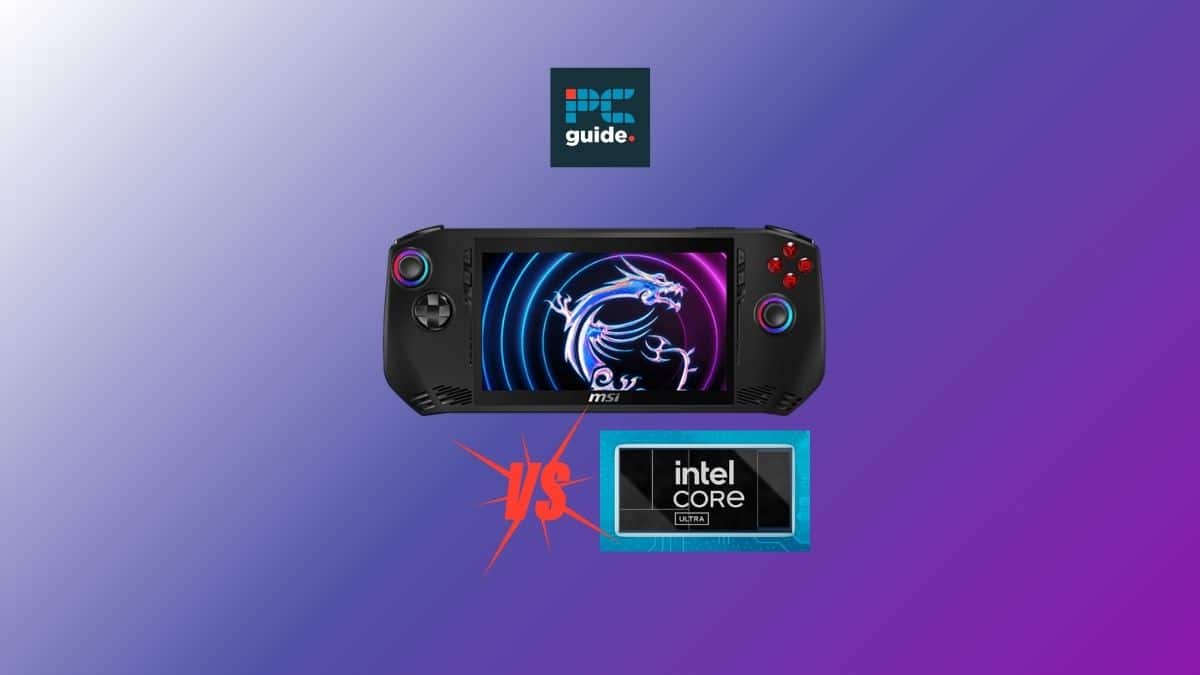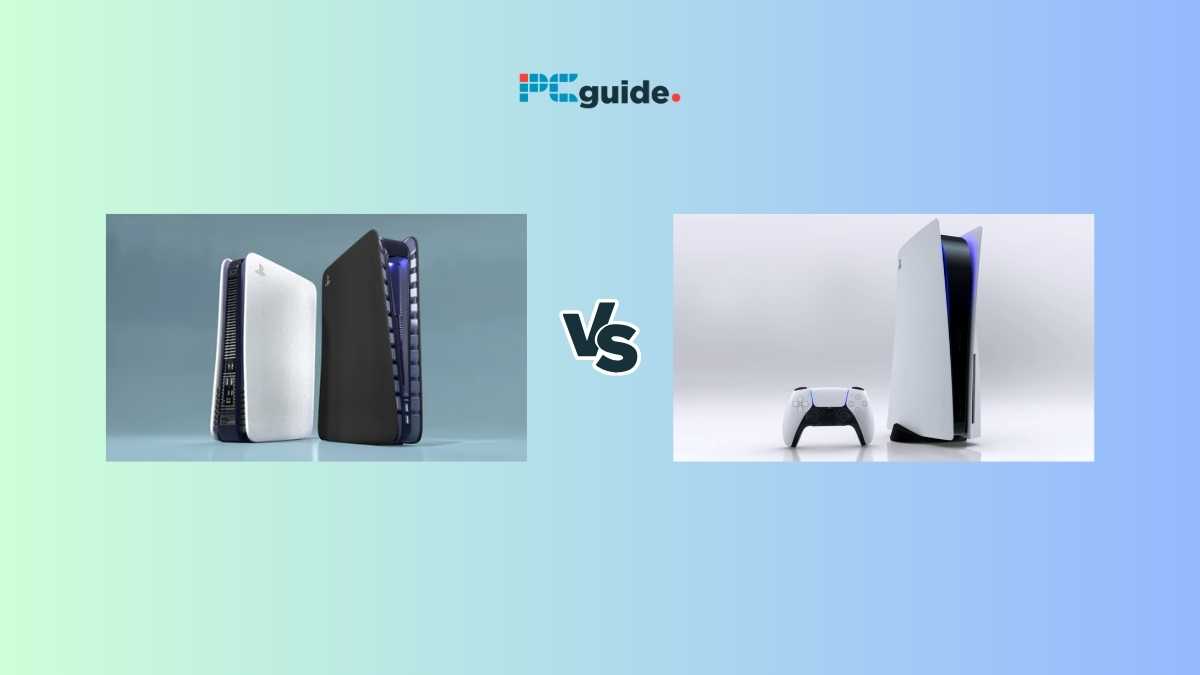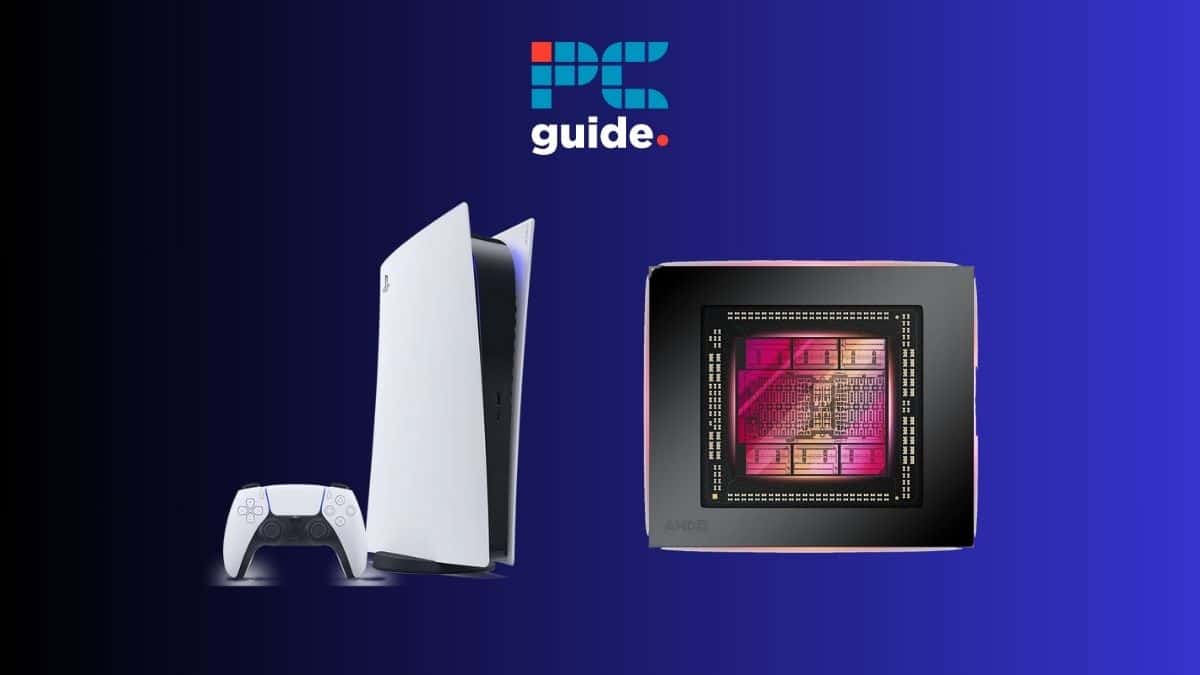As Sony’s newest handheld competitor rolls out onto the market, we see how it holds up against an established favorite console in the PlayStation Portal vs Steam Deck (OLED, LCD) head to head. Handheld consoles have seen a huge evolution in the past couple of years, and recent weeks have seen two major contenders vying for that top spot: the PlayStation Portal and the refreshed Steam Deck OLED.
Of course, each device offers unique features, capabilities, and purposes, making it challenging to determine which one is the best fit for your gaming needs. In this comparison article, we’ll take you through the specifications, features, and pricing of these consoles so you know where to place your gaming investment.
PlayStation Portal vs Steam Deck specs
| Specifications | PlayStation Portal | Steam Deck OLED & LCD |
|---|---|---|
| CPU | AMD Zen 2 | OLED Version: AMD Zen 2 LCD Version: AMD Zen 2 |
| Graphics | RDNA 2 | OLED Version: RDNA 2 LCD Version: RDNA 2 |
| RAM | – | OLED Version: 16GB LPDDR5 LCD Version: |
| Storage | – | OLED Version: 512GB / 1TB SSD LCD Version: 256GB SSD |
| Display | 8” LCD | OLED Version: 7.4″ HDR OLED LCD Version: 7″ LCD |
| Refresh Rate | 60Hz | OLED Version: 90Hz LCD Version: 60Hz |
| Connectivity | Wi-Fi 5 (802.11ac) | OLED Version: Wi-Fi 6E LCD Version: Wi-Fi 5 |
| Battery Life | 4-12 hours | OLED Version: Up to 12 hours LCD Version: 2-8 hours |
| Weight | 1.16 pounds | OLED Version: 1.41 pounds LCD Version: 1.47 pounds |
PlayStation Portal vs Steam Deck features
Here, we will explore the devices one after the other, including their feature.
PlayStation Portal
The PlayStation Portal sets itself apart from its competitors by offering a unique remote gaming experience with an 8-inch LCD screen seemingly wedged in the middle of a DualSense controller. Before you ask, yes the haptic feedback and adaptive triggers used on classic DualSense accessories are featured on the Portal, meaning you still get the immersive gaming experience found on your main PS5 console. With PlayStation Portal Remote Play, you can stream compatible games installed on your PS5 console directly to the device, via PlayStation Link. This feature requires a broadband internet connection with a minimum speed of 5Mbps, although a high-speed connection of at least 15Mbps is recommended for optimal performance. It’s important to note that the quality and connectivity of your play experience may vary depending on your network environment.
As a handheld device that accompanies the PS5, it’s a dream; but that’s the PS Portal’s only real purpose. If you’re not connected to WiFi, there’s not much you can do with the remote other than stare at your reflection in the 8″ screen. Additionally, without Bluetooth support, you’re limited to Sony’s Pulse Elite headset and Pulse wireless earbuds that use the company’s new PlayStation Link technology. Its November release date has just passed, leaving the device in high demand. If you’re one of the many gamers intrigued by Sony’s new handheld, keep an eye on our PlayStation Portal stock tracker to follow when and where the device becomes available in your region.
Steam Deck (OLED & LCD)
Valve’s introduction of the Steam Deck OLED brings a host of improvements to the original Steam Deck. Naturally, the standout feature of the OLED version is its enhanced display technology. The 7.4-inch HDR OLED screen offers higher contrast, greater control of brightness on a per-pixel basis, and more vibrant and immersive visuals. The OLED display boasts a peak brightness close to 1,000 nits, and with support for HDR mode, content truly comes to life on the screen.
Apart from the display, the Steam Deck OLED offers a few other minor upgrades. It features a more efficient AMD Zen 2 CPU with a 6nm process, faster LPDDR5 RAM clocked at 6400MHz, as well as increased storage options. The device comes in two variants: a 512GB model and a 1TB model. Both models offer ample storage space for your games, media, and other content.
While the Steam Deck OLED may steal the spotlight with its improved features, the Steam Deck LCD remains a viable option for handheld gaming enthusiasts. The LCD version of the Steam Deck offers a 7-inch display with a resolution of 1280×800 pixels. Although it may not match the vibrancy and contrast of OLED technology, the LCD screen still delivers a satisfactory gaming experience – to hear more about our hands-on experience, you can read our Steam Deck LCD review here. It’s also powered by a slightly clunkier 7nm AMD Zen 2 CPU. However, on the whole, the performance and overall purpose of the two Steam Deck models are pretty much the same: it’s essentially a portable gaming PC, that allows you to take your Steam library with you on the go. To point out the obvious, it can run games natively, which the PS Portal can’t do. The Steam Deck also has impressive hardware specs that soar beyond the capabilities of the Portal, mainly due to it being a streaming device that lets the PS5 do the heavy lifting.
What’s the difference between the Steam Deck OLED and Steam Deck LCD?
Clue is in the name really: the main difference between the OLED and LCD Steam Deck models is their display type. As well as featuring an OLED screen, the newer Deck is also slightly bigger, at 7.4″ as opposed to 7″.
However, my in-depth research into the two devices didn’t bring up a whole load of differences other than the better display, bigger battery, and optimized chip of the OLED Steam Deck. In terms of raw performance, there isn’t a lot that distinguishes the two and marks one as better than the other. This might be because the Steam Deck OLED wasn’t designed as a complete console overhaul, more just a needed refresh.
PlayStation Portal vs Steam Deck price
When it comes to pricing, the three handheld gaming consoles have different price points to cater to various budgets. The original Steam Deck LCD, with its 256GB storage capacity, is priced at $400. On the other hand, the Steam Deck OLED offers two storage options: a 512GB model priced at $550 and a premium 1TB model priced at $650. The premium model comes with a unique etched-glass screen and additional digital rewards.
The PlayStation Portal, being a remote gaming solution, requires a PS5 console and a PlayStation Network account for full functionality. The pricing for the PlayStation Portal is $199.99 / £199.99. This puts it at the same price as the DualSense Edge wireless controller, which also hits the $200 price point. While it’s a lot cheaper than the Steam Deck, you do have to have already invested in a $500 console before you can even consider getting a PortaI at all.
Is the PlayStation Portal better than the Steam Deck?
The PlayStation Portal, Steam Deck OLED, and Steam Deck LCD each have their own unique strengths and features. The PlayStation Portal stands out as a remote gaming solution, offering the ability to stream games from the PS5 console. Gamers have to keep in mind that the Portal was created as a Remote Play device, not as a competitor to powerful handheld consoles such as the Steam Deck or Nintendo Switch.
On the other hand, the Steam Deck OLED brings a next-gen upgrade with its enhanced display technology, faster memory, and improved battery life. The Steam Deck LCD offers a solid gaming experience at an affordable price point, making it an attractive option for budget-conscious gamers. Valve’s console offers a completely different device to the Portal, a portable gaming PC that puts your Steam Library into your pocket. For PC gamers seeking more versatility, the Steam Deck is certainly a console to consider.


